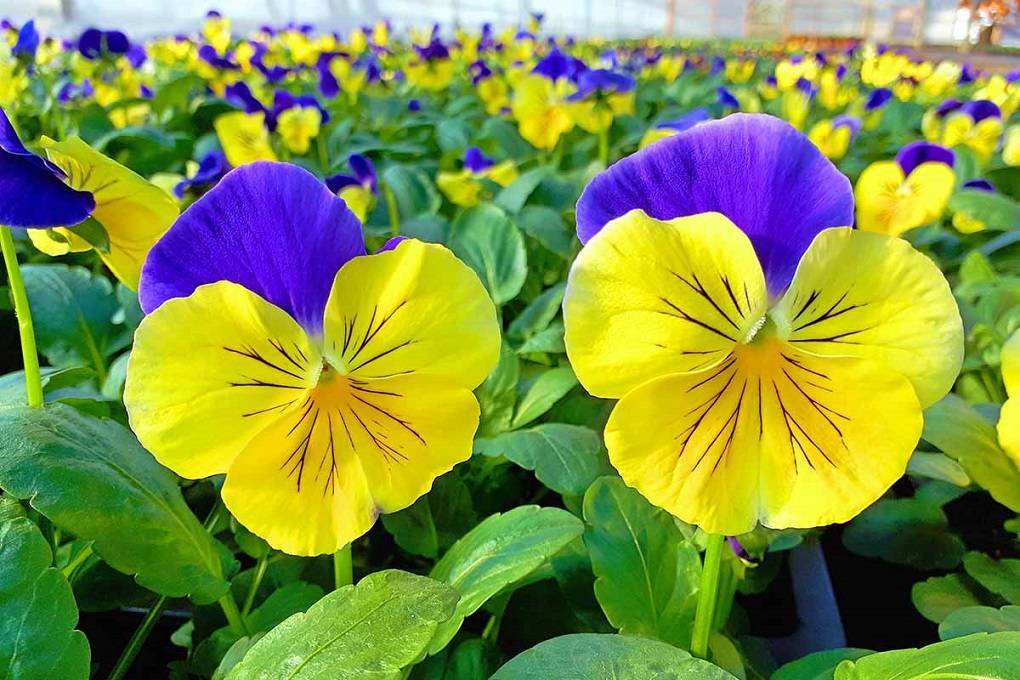
Pansy or Viola x wittrockiana belongs to the Violaceae family. It is native to Europe and Asia and has several varieties that produce different colour of flowers. In this article, we will share our tips to plant, grow, and care for pansies.
Pansies are a common flowering garden variety plant. They are fast-growing flowers that grow vigorously in the right environmental conditions. Pansies often produce flowers that are in the shape of a heart and their bright-coloured or bi-coloured petals usually overlap. This plant is specifically bred to withstand cold temperatures.
Soil Preparation
Different varieties of pansies can grow in different types of soils. Most garden varieties of pansies grow best in loose, well-draining, and nutrient-rich soil that is slightly acidic. Before sowing pansies, prepare the soil by adding either mushroom compost or other types of organic compost because pansies are heavy feeders.
Sowing Method
When planting winter pansies, the best time to sow seeds in the ground is in late autumn and possibly before at least 2 months before the frost. If the temperature is too low at the time of sowing, it is possible that the seeds will not germinate and in the case of transplanting seedlings, the roots become inactive and growth becomes stunted.
Pansies with an active growing period in summer must be planted in either late spring or early summer. In order to grow a bush of pansies, space the seeds or seedlings at least 15 cm apart. When sowing pansies in a pot, use a multi-purpose potting compost. You can also increase the chances of germinating inside a pot by adding some well-rotted garden compost at the borders of the pot to improve the quality of the soil.
Sun Exposure and Temperature
Pansies are extremely versatile plants that can be grown indoors on pots and outdoors in the ground. They require direct sunlight when they are young. As they mature, start keeping your pansy plants in the partial or indirect shade because that will give the plant a fresh-looking appearance and also keeps the flowers intact on the plant for a longer period.
Pansies are prone to sun damage and don’t thrive in extremely hot temperatures. You’ll notice that your pansy plant will start declining in warm weather. Warmer weather leads to fewer flowers, floppy stems, and stunted growth. And while some varieties of pansies are bred to withstand harsh cold weather, many others can easily die during winter.
Irrigation and Humidity
Pansy plant thrives in humid environment. Consistently moist soil tends to keep pansy flowers soft and supple. When growing indoors, you can keep a humidifier next to your pansy plants. However, this plant does not tolerate soggy soil and overwatering can cause many problems in the plant.
Although this plant must be watered regularly during the growing season, make sure that the soil is completely dry between watering. During winter, it is best to water the plant only once in a while because drier soils help pansies survive the cold. If your pansies are planted in pots, make sure that they have drainage holes to encourage air to pass through the soil.
Fertilizing
Before planting pansies mix the soil with a slow-release fertilizer. It is important to feed your pansy plants during the active growth period to promote a healthy bloom. Add fertilizer to the soil before the soil becomes hard in the winter. Pansies can be fed general garden variety all-purpose fertilizer.
However, make sure that your fertilizer does not have high nitrogen concentration because that will result in more leaves instead of flowers. You can also facilitate the healthy growth of your pansy plant by pruning it regularly, cutting away all damaged and dying leaves or flowers, and removing weeds from the soil.
Pests and Disease Management
Common pansy pests include slugs, aphids, and spider mites. Signs of infestation include brown spots on leaves, rapid and untimely yellowing of leaves and tiny holes in the leaves. Pest infestations can be dealt with by spraying the plant with a strong water hose or by spraying your plant with an organic insecticide.










